Planting coreopsis, features of growing perennial and annual varieties
The numerous Astrov family also includes the "sunny chamomile" - coreopsis, blooming from mid-summer to autumn. Where this flower is grown, the garden turns into a riot of rich yellow, bright yellow-brown or pink colors. Some species are similar to Gaillardia, because they also come from the North American continent. Others are from Africa and South America.
Description
Coreopsis is a herbaceous perennial plant, although there are also wild shrubs. Its roots are dense, fibrous. Straight stems are densely leafy, actively branching, from 20 cm to 1 m in height. Basal leaves have a large, entire blade. On the stem, the leaves are opposite, pinnately-divided or finger-like. Painted in different shades of green.
On long peduncles there are single inflorescences, baskets of various sizes, depending on the type, their diameter reaches 5-8 cm. Simple and double baskets consist of central small tubular flowers of various yellow, orange and bright brown shades. Extreme ligulate flowers are serrated along the edge, their palette is rich - from sunny yellow to combinations with bright red-brown shades. More intense tones are concentrated in a circular pattern towards the middle of the basket. There are pink and purple flowers. Coreopsis fruits are black achenes with many small grains.
The seeds that look like bedbugs gave the flower its botanical name. From the Greek language "koris" is translated as "bug", and "opsis" is a species. The plant is also called yellow or golden chamomile, Parisian beauty, brown-eyed.
The flowers are sun-loving, undemanding to soil, frost-resistant, withstand summer heat.
Coreopsis is planted in the sun or in light partial shade on loose, drained soils.
Types and varieties
Scientists distinguish about 100 species of coreopsis, 30 of them are domesticated and are often found in gardens. It is more common to grow perennial coreopsis, which are easier to care for.
Large-flowered
The bushes are powerful, highly branching, up to 1 m high, with a colorful crown of golden yellow large inflorescences. The upper leaves are pinnately dissected. Flowering is relatively early, from June to autumn. The species cannot grow in one place for more than 3 years, even with good care, a transplant is required.
- The varieties Sunburst, Mayfield Giant, Baden Gold reach a height of 90-100 cm. Inflorescences are 6.5-7 cm. In Mayfield Giant, the diameter of the baskets is up to 8 cm.
- Calypso rises up to 50 cm. Leaves are variegated, baskets with a reddish center.
- Early Sunrise, Sunray grow in compact bushes up to 50 cm high, topped with luxurious double inflorescences.
- A short Sundancer with terry baskets grows up to 20-30 cm.
Lanceolate
Erect branched stems with lanceolate leaves sitting on petioles in the lower part of the plant grow up to 60 cm. Baskets up to 6 cm in diameter are predominantly yellow. Peduncles with double inflorescences are slightly inclined. The two-month flowering of a curtain of lanceolate coreopsis of different varieties creates a serene mood with its sunny appearance.
- In a tall, 60 cm Golden Queen variety, the width of the yellow inflorescence is 5-6 cm.
- Rotkehlchen, 45 cm high, has red tubular flowers in the center of a 5 cm basket.
- The undersized Goldfink rises up to 30 cm.
Whorled
The branched stems of a compact 60-centimeter bush are erect, densely leafy. Strongly dissected sessile leaves, like needles, are collected in a light green whorl. The flowers are simple, star-shaped, with oblong pointed petals.The diameter of the basket is up to 3 cm. The bushes can not be transplanted for 6 years.
- Tall, up to 60-75 cm, Golden Shower strikes with a bright starfall. After the first flowering, the bushes can be trimmed and wait for the golden second wave.
- Ruby Red, 50 cm, baskets with ligulate toothed ruby-red flowers and a yellow-crimson center.
- Mercury Rising - 40 cm, with dark cherry flowers with a yellow heart.
- The undersized (30 cm) popular Zagreb pleases with small golden flowers with a darker center.
- Moonbeam - 30 cm, with elegant simple cream-colored baskets.
Auriculate
Differs in low-growing dense bushes with branched erect low-leafed stems. The leaves are rounded, elongated, gathered at the bottom into a rosette. Yellow and orange inflorescences up to 4.5 cm in diameter. Blooms from late May or June. After the first wave of flowering, the inflorescences are cut off.
The most popular are the following varieties of auricular coreopsis.
- Nana - grows up to 30 cm, is a compact shrub with oval leaves and small yellow flowers. Pleases with abundant re-flowering, subject to pruning fading baskets.
- Zamphir - 30-35 cm, dense bush, baskets with grooved ligulate flowers of a golden orange hue.
Pink
The bush is low, 20-40 cm, very lush, grows up to half a meter and more in diameter. Narrow linear leaves on erect stems. Ligulate flowers are pink, tubular flowers are yellow. The baskets are small (2–2.5 cm), but showy.
- Sweet Dreams is a variety with the most eye-catching flowers: rich crimson petals, edged with white, with a yellow heart.
- Heaven's Gate features pink-purple petals.
- American Dream - with pale pink simple inflorescences.
Annual species
Annual coreopsis are also grown for the annual change of garden decorations.
- Coreopsis Drummond, 50 cm, strongly branching stem with yellow baskets up to 4 cm in diameter and a bright brown pattern of petals towards the center.
- Coreopsis dye grows up to 90-100 cm. Petals are yellow or red-brown.
Not all species bloom on fertile land. Coreopsis large-flowered prefers dry sandy loam soil without excess organic matter. On such soils, pink coreopsis also blooms better.
Role in garden design
Bright curtains of coreopsis are planted in a variety of garden compositions:
- in curbs;
- in rock gardens;
- along the perimeter of the lawn;
- for background in mixborders;
- in groups in front of bushes;
- in containers.
Partners - plants with blue flowers: veronica, delphinium, aconite, lobelia or gray cineraria. Beautiful compositions are obtained in combination with rudbeckias, roses, lilies.
Reproduction
Coreopsis reproduces easily:
- purchased bushes after two to three years need to be divided in May or September;
- cuttings are cut in summer and rooted;
- flowers reproduce by self-seeding;
- purchased seeds are best planted for seedlings.
Stagnant water at the roots is detrimental to coreopsis.
Care
Growing from seeds is the easiest way to propagate a flower. Coreopsis is sown in a container in spring. Young plants are transplanted to an open, sunny place. Autumn is also suitable for open field sowing - the seeds are not afraid of frost.
Coreopsis care is simple.
- Plants are watered during dry periods.
- They are fed with complex mineral fertilizers.
- Only during very frosty winters is coreopsis covered with foliage.
- For fungal diseases such as fusarium and rust, they are treated with fungicides.
- In the case of twisting of the tops and leaves, spotting, with slow development of the plant, it is better to remove it. Most likely, it is a viral disease.
- Aphids are eliminated by spraying the colony with soapy water or garlic infusion.
The yard is transformed, and the flower garden plays with bright colors if you plant a joyful coreopsis in it.
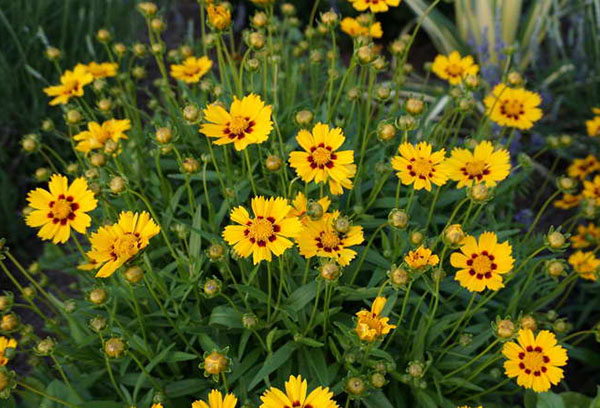
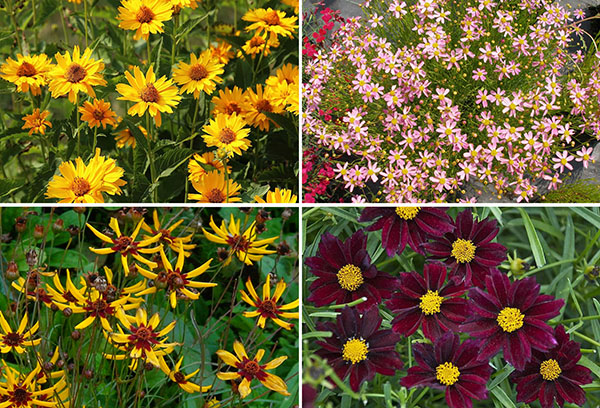
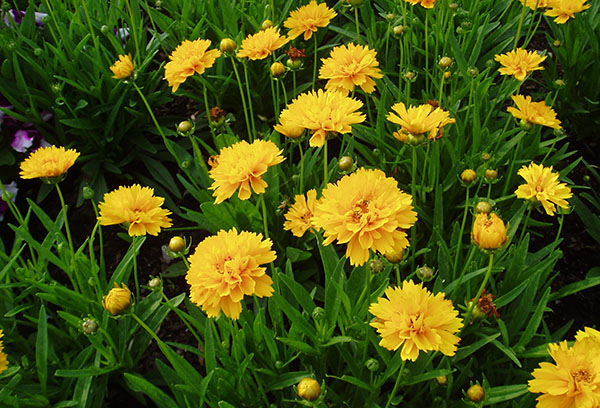

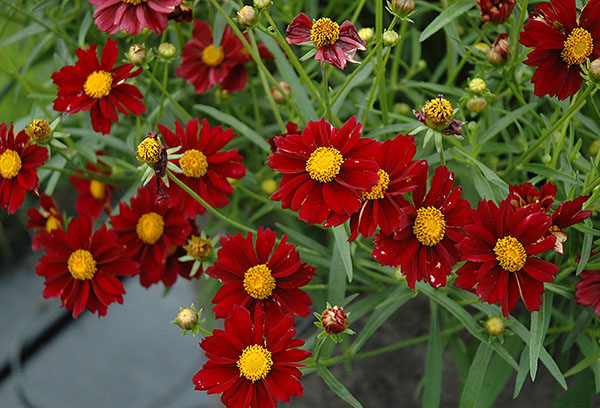
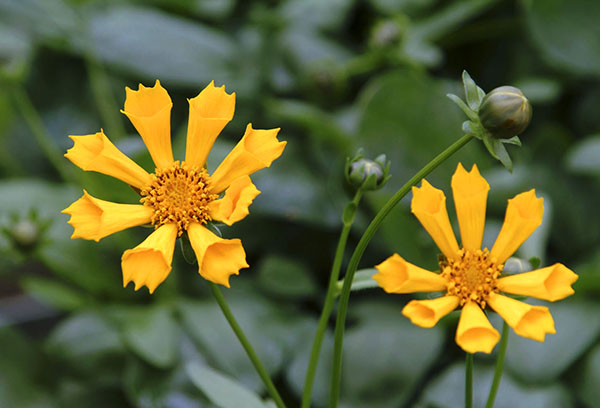
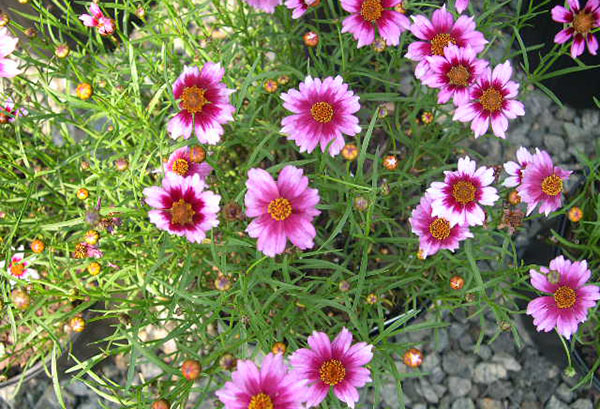
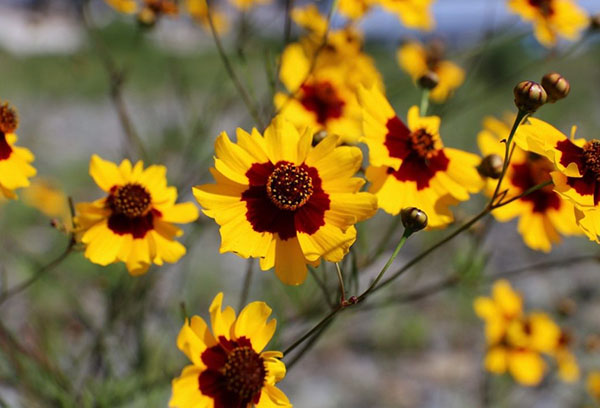
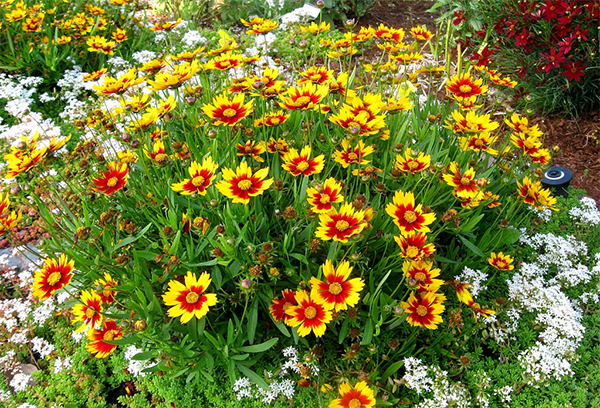
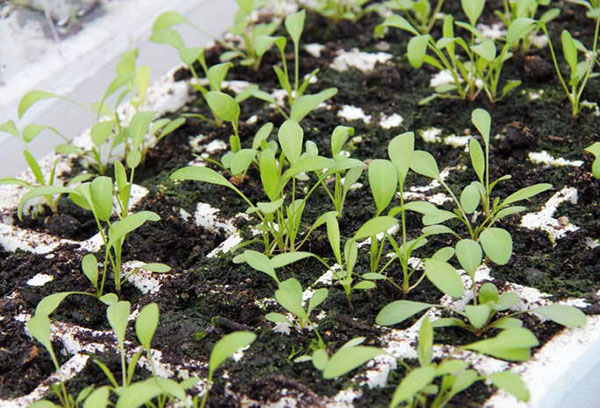
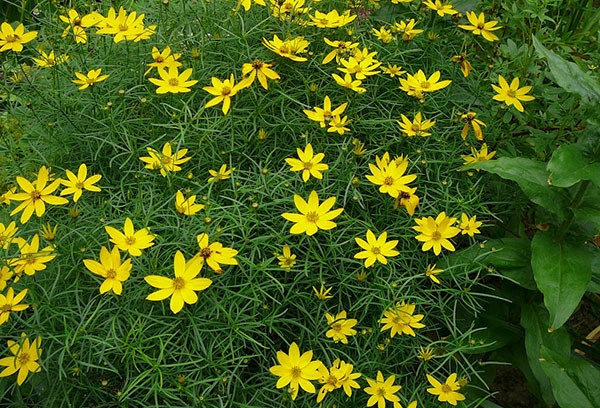
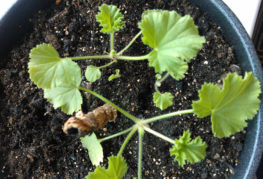
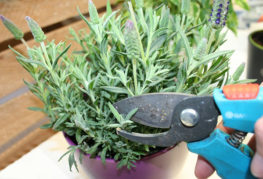
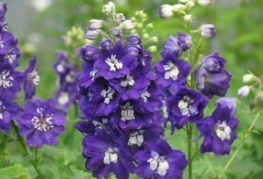

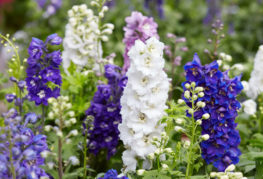
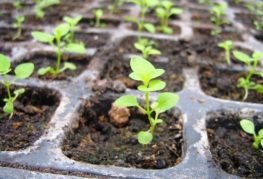
and will be published shortly.